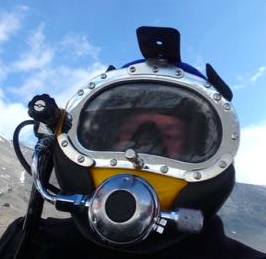
American Fork Junior High students team up with Antarctic scientists to do something never done before. They chatted live, from their classroom, to an Antarctic Scientist / Diver who was on a dive, below the ice, of a lake in Antarctica!
On 1/16/19, at 10:24am Antarctic time, history was made. 9th grade science students from American Fork Junior High teamed up with Antarctic scientists to do a first...they chatted with a diver / scientist, while he was underwater, while under 12 feet of ice, in a lake, in the Dry Valleys of Antarctica.
Here's how it went down: The logistics to make this event happen were no easy matter. I had made plans with Sarah, one of my top biology students, to be prepared to accept a call from our satellite phone during class. She agreed and it was "game on" from there. I called her at 9:50am on Wednesday Antarctic time (which was 1:50pm Tuesday Utah time). The connection seemed to work. It was fun to have a 1-minute chat with Sarah to see how everyone was doing. It has been almost a month since I have seem my students.
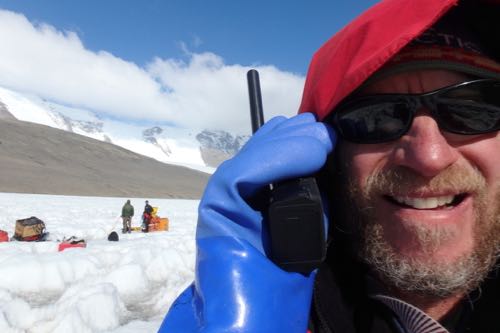
Dr. Shawn Devlin, from the University of Montana, would be the scientist who my students would be talking with. Here he is preparing for his dive in the 33 degree water. He wears several warm layers under his dry suit. He wears gloves, and a hood that will keep him dry. He has dove these waters, studying the microbes of these freshwater lakes for many years. For many years, people did not think anything was living in these lakes. Not too many years ago, scientists found "microbial mats", which are colonies of photosynthesizing bacteria who have made these waters their home.
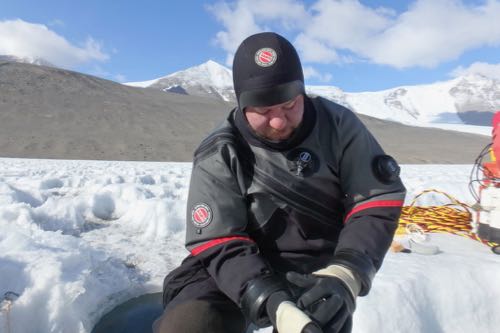
Notice the valves in Dr. Devlin's dry suit. The one on his chest is used to add air to his dry suit. That increases his buoyancy as he descends to deeper water, which also compresses his body, making him more dense and less buoyant. Adding air to a dry suit also increases warmth since air is such a good insulator. The valve on his left arm is used to dump air. He needs to do that as he ascends since there will be less pressure as he ascends, making him more buoyant which can be dangerous if he ascends too quickly.
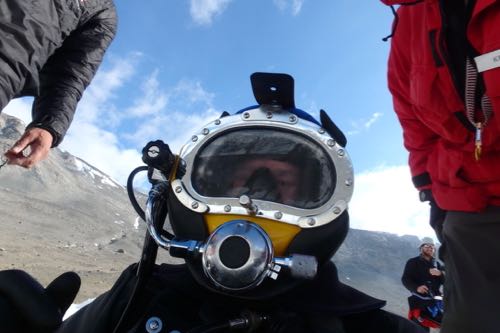
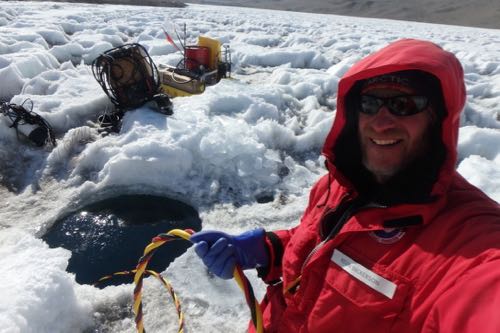
The Connection Under Antarctic Ice To Utah
Once Shawn was through the ice, James McClure, another diver / scientist manned the communication box and air supply. I would communicate with students in their classroom (who had their phone on speaker mode and running through their classroom sound system) by way of the satellite phone. The question would then be relayed to James, who would then relay the question to Shawn who was below the ice diving. He would reply back and the kids could hear his answers straight from him by placing the phone up to the com box's speaker.
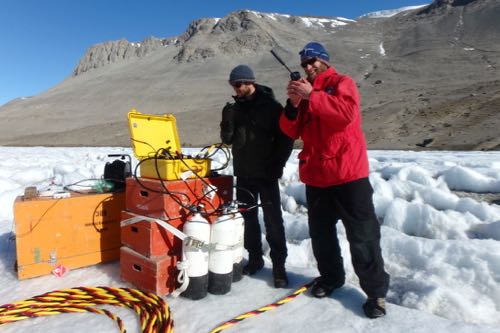
Some of the Questions asked:
Q: How do you stay warm down there?
A: Lots of warm layers and a dry suit on top.
Q: What kind of wildlife do you see down there?
A: No "wildlife" other than the bacterial mats attached to the bottom of the lake.
Q: Do you see plankton in the water?
A: Nothing in the water column was seen. The life was down attached to the soil.
Q: What do you do when you need to go to the bathroom while diving?
A: Don't!
What About The Science?
As fun as it may sound, diving in 33 degree water in a lake with 12 feet of ice on it, in Antarctica, this is not recreational diving. This is science research diving. The divers, who are also scientists, collect samples from specially documented locations, place them in specimen containers, and then take them back to their labs where they will look at the different types, and how much life was found at those locations.
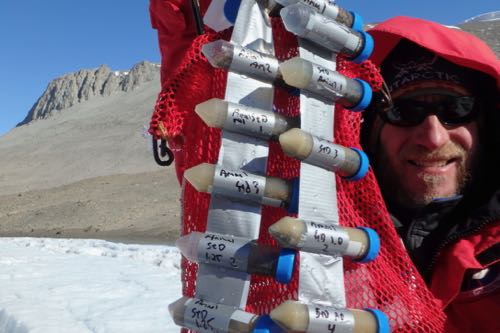
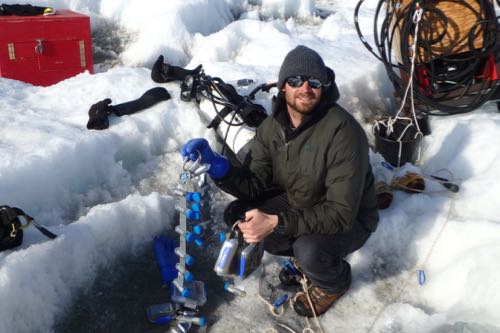
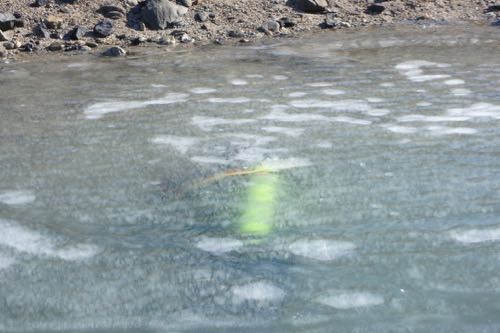
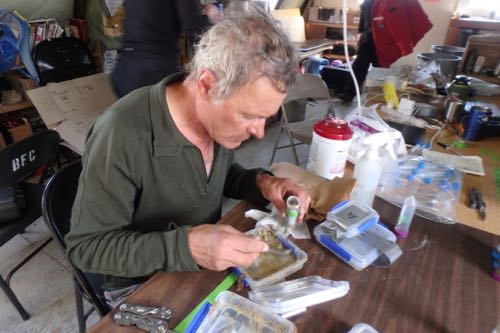
Here is a video clip showing Dr. Shawn Devlin's viewpoint of the conversation. If you listen closely, you can hear him talking to the students through his helmet. At the end of the video, Dr. Devlin is showing you how he collects his samples of the cyanobacteria mats on the bottom of the lake.


Comments